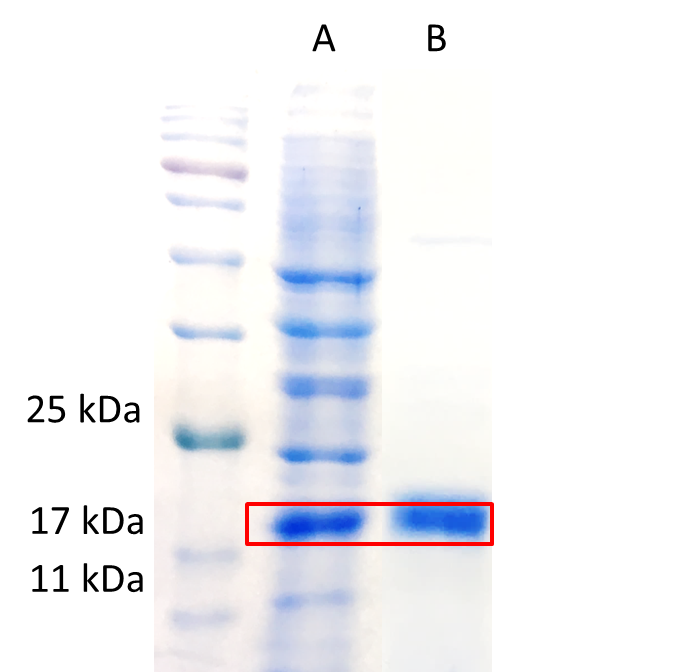Part:BBa_K1974001
Omega-hexatoxin-hv1a
Introduction:
This year we create a revolutionary system that integrates biological pesticide, an automatic detector, a sprinkler, and IoT. We made a database that contains most of the spider toxins and selected the target toxins by programming. Omega-hexatoxin-Hv1a is coded for the venom of a spider, Hadronyche versus.
Mechanism of Hv1a:
According to the reference, Omega-hexatoxin-Hv1a has a structure called ICK (inhibitor cysteine knot). This kind of structure contains three disulfide bonds and beta-sheet. With this structure, Hv1a can resist the high temperature, acid base solution and the digest juice of insect gut. Hv1a can bind on insect voltage-gated Calcium channels (CaV1) in the central nervous system, making it paralyze and die eventually.[1]
Features of Hv1a:
1. Non-toxic
Omega-hexatoxin-Hv1a is non-toxic to mammals and Hymenoptera (bees). Since the structure of the target ion channel is different, omega-hexatoxin-Hv1a does not harm mammals and bees.[2] So it is safe to use it as a biological pesticide.
2. Biodegradable
Omega-hexatoxin-Hv1a is a polypeptide so it must degrade over time. After degradation, the toxin will become nutrition in the soil.
3. Species-specific
According to reference, Omega-hexatoxin-Hv1a has specificity to Lepidopteran (moths), Dipteran (flies) and Orthopteran (grasshoppers).
4. Eco-friendly
Compare with chemical pesticides, Omega-hexatoxin-Hv1a will not remain in soil and water so that it will not pollute the environment and won’t harm the ecosystem.Altogether, using Omega-hexatoxin-Hv1a is totally an environmentally friendly way for solving harmful insect problems by using this ion channel inhibitor as a biological pesticide.
Target insect:
Experiment
Cloning
After assembling the DNA sequences from the basic parts, we recombined toxin gene to pSB1C3 backbones and conducted a PCR experiment to check the size of each part. The DNA sequence length of these parts is around 100-150 b.p. In this PCR experiment, the toxin product's size should be near at 350-450 b.p.
Application of the part
1. Expressing
We chose E.coli Rosetta gami strain, which can form the disulfide bonds in the cytoplasm to express the protein. To verify the E.coli express the Hv1a with disulfide bonds, we treated the sample in two different ways. A means adding β-mercaptoethanol and sample buffer. β-mercaptoethanol can break the disulfide bonds of Hv1a and make it a linear form.
The other one adding sample buffer is the native form of Hv1a which maintains its structure. B is adding only sample buffer. The two samples are treated in boiling water for 15 mins. The SDS-PAGE shows that the native Hv1a is smaller than linear one because the disulfide bonds in Hv1a make the whole structure a globular shape.
2.Purification
We sonicated the bacteria and purified the protein by 6X /pHis-Tag behind the peptide using Nickel resin column. Then we ran the SDS-PAGE to verify the purification and analyzed the concentration of Hv1a.
3.Modeling
According to reference, the energy of Ultraviolet will break the disulfide bonds and the toxicity is also decreased. To take the parameter into consideration for our automatic system, we modeled the degradation rate of the protein and modified the program in our device. Therefore, Pantide was tested under the ultraviolet light. The protein electrophoresis was shown below.
4. Device
We designed a device that contains detector, sprinkler, and integrated hardware with users by APP through IoT talk. We use an infrared detector to detect the number of the pest and predict what time to spray the farmland. Furthermore, other detectors like temperature, humidity, lamination, pressure of carbon dioxide and on also install in our device. At the same time, the APP would contact the users that all the information about the farmland and spray biological pesticides automatically. This device can make farmers control the farmland remotely.
Results
Pantide-expressed E. coli Rosetta gami strain and diluted it with the three concentration.We applied the sample onto the leaf disks and put five cutworms into the separate cabinets for feeding assays. The positive control in the experiment was to apply Bacillus thuringiensis, which is the most widely-used bioinsecticide. We preserved all the result of the remained leaves sealing with the glass paper and calculated the ratio of the remained area on the leaves. The collected data were analyzed by t – test. Here are the feeding assay results.
Reference:
1. Wang, X.H.; Connor, M.; Wilson, D.C.; Wilson, H.I.; Nicholson, G.M.; Smith, R.; Shaw, D.; Mackay, J.P.; Alewood, P.F.; Christie, M.J.; King, G.F. “Discovery and structure of a potent and highly specific blocker of insect calcium channels,” J. Biol. Chem. 2001, 276, 40306–40312
2. Monique J. Windley, Volker Herzig, Slawomir A. Dziemborowicz, Margaret C. Hardy, Glenn F. King and Graham M. Nicholson, “Spider-Venom Peptide as Bioinsecticide,” Toxins Review, 2012, 4, pp. 191-227.
Sequence and Features
- 10COMPATIBLE WITH RFC[10]
- 12COMPATIBLE WITH RFC[12]
- 21COMPATIBLE WITH RFC[21]
- 23COMPATIBLE WITH RFC[23]
- 25COMPATIBLE WITH RFC[25]
- 1000COMPATIBLE WITH RFC[1000]
//awards/part_collection/2016
| None |











